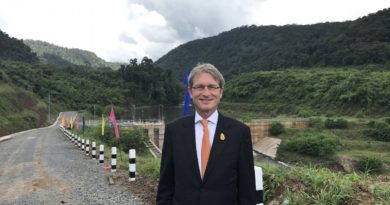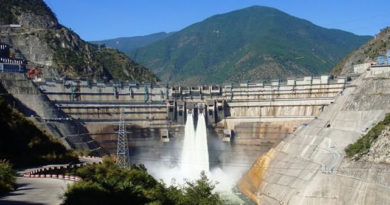Laos’ Energy Market: Current Trends and Future Outlook
Source: Energy Portal
Laos, a landlocked country in Southeast Asia, has been experiencing rapid economic growth in recent years, driven by its abundant natural resources and strategic location. As a result, the country’s energy market has been undergoing significant changes, with a focus on renewable energy sources and regional integration. This article will explore the current trends in Laos’ energy market and provide an outlook on its future development.
One of the key drivers of Laos’ energy market growth is the country’s vast hydropower potential. With the Mekong River running through its territory, Laos has the ability to generate up to 28,000 megawatts (MW) of electricity from hydropower, making it the “Battery of Southeast Asia.” Currently, the country has around 6,000 MW of installed hydropower capacity, with plans to increase this to 14,000 MW by 2030. The Lao government has been actively promoting hydropower development, both for domestic consumption and for export to neighboring countries, such as Thailand, Vietnam, and Cambodia.
In addition to hydropower, Laos has also been exploring other renewable energy sources, such as solar and biomass. The country’s first large-scale solar power plant, with a capacity of 10 MW, was commissioned in 2018, and several other solar projects are currently under development. Biomass, derived from agricultural waste and residues, is another promising source of renewable energy for Laos, as it can help to address the country’s energy needs while also providing a sustainable solution for waste management.
The Lao government has set ambitious targets for renewable energy development, aiming to increase the share of renewables in the country’s energy mix to 30% by 2025. To achieve this goal, the government has been implementing various policies and incentives to encourage investment in renewable energy projects, such as feed-in tariffs, tax exemptions, and low-interest loans. These efforts have started to bear fruit, with several international companies and development partners expressing interest in investing in Laos’ renewable energy sector.
Another notable trend in Laos’ energy market is the increasing emphasis on regional integration. As part of the Greater Mekong Subregion (GMS) and the Association of Southeast Asian Nations (ASEAN) Power Grid, Laos has been actively participating in cross-border power trade and interconnection projects. The country’s strategic location, combined with its abundant hydropower resources, makes it an ideal hub for regional power trade. In fact, Laos currently exports around 70% of its electricity to neighboring countries, and this figure is expected to rise in the coming years as more hydropower projects come online.
Looking ahead, the future of Laos’ energy market appears promising, with several factors contributing to its continued growth. Firstly, the country’s strong commitment to renewable energy development, as evidenced by its ambitious targets and supportive policies, is expected to attract more investment in the sector. This, in turn, will help to diversify Laos’ energy mix and reduce its reliance on hydropower, which is vulnerable to climate change and environmental concerns.
Secondly, the ongoing regional integration efforts, such as the GMS and ASEAN Power Grid initiatives, will provide Laos with more opportunities to export its electricity and generate revenue. This will not only help to strengthen the country’s economy but also contribute to regional energy security and cooperation.
Lastly, as Laos continues to develop its energy infrastructure and expand its power generation capacity, it will be better positioned to meet the growing domestic demand for electricity, which is essential for sustaining its economic growth and improving the living standards of its people.
In conclusion, Laos’ energy market is currently experiencing significant changes, driven by the country’s commitment to renewable energy development and regional integration. With the right policies and investments in place, Laos has the potential to become a major player in the regional energy landscape, leveraging its abundant natural resources and strategic location to power its own growth and contribute to a more sustainable and interconnected Southeast Asia.




